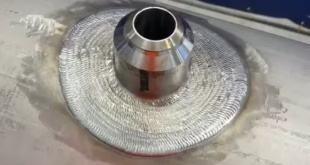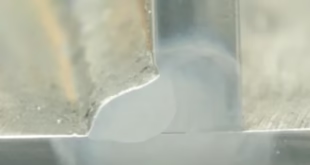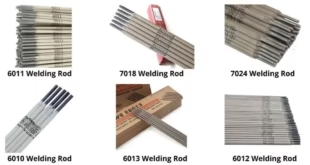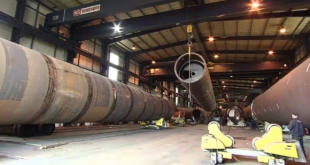Autogenous welding is a specialized technique of welding that holds notable importance in various industrial applications. At its core, autogenous welding involves fusing two metal pieces together using heat, without the need for any additional filler material. This unique approach has garnered attention within the welding industry due to its distinct advantages and specific use cases. The primary objective of this outline is to delve into the intricacies of autogenous welding, shedding light on its definition, significance, and key aspects.
Understanding Autogenous Welding
Definition and Basic Concept
Autogenous welding, in simple terms, refers to the process of joining two metal components using heat without introducing any supplementary filler material. The heat generated is adequate to liquefy the base metals, facilitating their fusion and eventual solidification into a cohesive joint.

Key Characteristics
- Absence of Filler Material: One of the hallmark features of autogenous welding is the omission of filler material. Unlike traditional welding methods that incorporate filler rods or wires, autogenous welding relies solely on the parent materials.
- Joint Formation Mechanism: Autogenous welding relies on the localized heating of the metal components until they reach their melting point. Upon cooling, the molten metal solidifies, creating a seamless joint that shares the same metallurgical properties as the base materials.
- Welding Parameters: The success of autogenous welding hinges on precise control of welding parameters such as heat input, arc/stirring characteristics, and cooling rate. The absence of filler material necessitates meticulous management of these parameters to achieve optimal joint quality and integrity.
Types of Autogenous Welding
Fusion Welding Processes
- Tungsten Inert Gas (TIG) Welding TIG welding, also known as Gas Tungsten Arc Welding (GTAW), employs a non-consumable tungsten electrode to generate an electric arc. The arc’s heat melts the base metals, and an inert gas shield prevents atmospheric contamination, ensuring a clean, high-quality weld.
- Plasma Arc Welding (PAW) Plasma arc welding utilizes a highly concentrated, ionized gas plasma to create a focused, intense heat source. This method offers enhanced precision and control, making it suitable for intricate welds and specialized applications.
Solid-State Welding Processes
- Friction Stir Welding (FSW) Friction stir welding involves a rotating tool that generates frictional heat between two metal surfaces. As the tool traverses the joint, the plasticized material consolidates, producing a solid-state bond characterized by refined grain structures and minimal distortion.
- Explosive Welding (EXW) Explosive welding utilizes controlled detonations to create a high-velocity collision between two metals. The impact generates sufficient heat and pressure to forge a metallurgical bond at the interface, often yielding joints with exceptional mechanical properties.
Autogenous Welding Process
Preparation and Setup
- Surface Cleaning Effective surface preparation, including degreasing and removal of contaminants, ensures optimal fusion and minimizes defects in the resulting weld.
- Joint Configuration The joint’s geometry and fit-up play a crucial role in autogenous welding. Precise alignment and sufficient gap control contribute to uniform heat distribution and consistent joint formation.
Heat Source and Energy Input
- Role of Heat in Fusion Heat is the fundamental catalyst in autogenous welding, raising the metal’s temperature beyond its melting point to enable fusion and bonding.
- Control of Heat Input Accurate regulation of heat input through factors such as arc voltage, current, and travel speed ensures desired melting, solidification, and overall joint integrity.
Welding Procedure
- Arc/Stir/Explosive Generation Depending on the welding process chosen, the generation of an electric arc (TIG), rotational friction (FSW), or controlled explosion (EXW) initiates the heat required for fusion.
- Molten Pool Formation and Solidification The localized heating leads to the creation of a molten pool, which, upon cooling and solidification, forms a coherent joint that seamlessly integrates the parent materials.
Applications of Autogenous Welding
Autogenous welding finds diverse applications across industries where its unique attributes meet specific requirements.
- Aerospace and Aircraft Manufacturing: Autogenous welding is valued in aerospace for its ability to create clean, high-strength joints critical to aircraft structural integrity, without introducing foreign material that might compromise performance.
- Automotive Industry: In the automotive sector, autogenous welding is employed for precise, aesthetic welds, ensuring vehicle components adhere seamlessly while maintaining structural rigidity.
- Shipbuilding and Maritime Applications: The maritime industry benefits from autogenous welding due to its capability to produce joints resistant to harsh marine environments, enhancing both safety and longevity of vessels.
- Electronics and Microfabrication: Autogenous welding plays a pivotal role in microfabrication, enabling intricate joins in electronic components, sensors, and microdevices where precision and minimal heat-affected zones are paramount.
- Jewelry and Artistic Creations: The artistry of jewelry making and artistic metalwork relies on autogenous welding for seamless, visually appealing joints in precious metals, granting designers greater creative freedom.
Advantages and Disadvantages
Advantages of Autogenous Welding
- Reduced Material Contamination Autogenous welding avoids the introduction of foreign filler materials, resulting in joints with improved metallurgical properties and reduced risk of impurities.
- Enhanced Aesthetic Appearance The absence of filler material ensures aesthetically pleasing welds with minimal irregularities, making autogenous welding a preferred choice for applications where appearance matters.
- Precise Control over Welding Zone Autogenous welding provides finer control over the heat-affected zone, limiting distortion and preserving material properties, which is vital in applications with stringent dimensional tolerances.
Limitations and Challenges
- Limited Joint Thickness Compatibility Autogenous welding is more suited for thinner materials, as it may face challenges when welding thicker joints due to heat dissipation and fusion-related issues.
- Skill-Intensive Process Successful autogenous welding demands a high level of skill and expertise, as precise control of welding parameters and techniques is essential to achieve desired joint quality.
- Susceptibility to Distortion and Cracking The intense localized heat during autogenous welding can lead to distortion and potential cracking, necessitating careful planning and execution to mitigate these issues.
FAQs
What is autogenous welding?
Autogenous welding is a process of joining metals using heat without adding filler material.
What is autogenous welding used for?
Autogenous welding is used to create clean, strong joints without introducing foreign filler material. It’s applied in industries like aerospace, automotive, microfabrication, and jewelry making.
Is TIG welding autogenous?
Yes, TIG welding (Gas Tungsten Arc Welding or GTAW) is an autogenous welding process where metals are fused using a non-consumable tungsten electrode and an inert gas shield.
Is autogenous welding strong?
Autogenous welding can create strong joints, but its strength depends on factors like material compatibility, welding technique, and proper parameters.
What is the best welding method?
The best welding method depends on the specific application. Different methods like TIG, MIG, and stick welding excel in various scenarios based on material, joint type, and desired outcome.
What is an example of autogenous welding?
An example of autogenous welding is TIG welding, where the heat from the arc melts and fuses the base metals without adding filler material.
Conclusion
In the world of welding, autogenous welding stands as a distinctive and specialized technique that offers both advantages and challenges across a spectrum of industries. This welding method, characterized by its absence of filler material and precise heat control, finds applications in sectors ranging from aerospace and automotive manufacturing to microfabrication and artistic creations.
The allure of autogenous welding lies in its ability to produce clean, aesthetically pleasing joints with reduced material contamination. This method empowers industries to achieve structural integrity, dimensional accuracy, and visual appeal simultaneously. However, it is not without its limitations, notably in terms of joint thickness compatibility and the skill-intensive nature of the process.
As technology continues to evolve, autogenous welding is poised for further innovation and integration into new materials and applications. The intersection of artistry and precision, the engineering of strength and aesthetics, and the pursuit of efficiency and quality make autogenous welding a captivating chapter in the broader narrative of welding techniques. By embracing its strengths and addressing its challenges, industries can tap into the potential of autogenous welding to advance their creations, designs, and engineering endeavors.
 Welding of Welders All about Welding and Welders
Welding of Welders All about Welding and Welders



